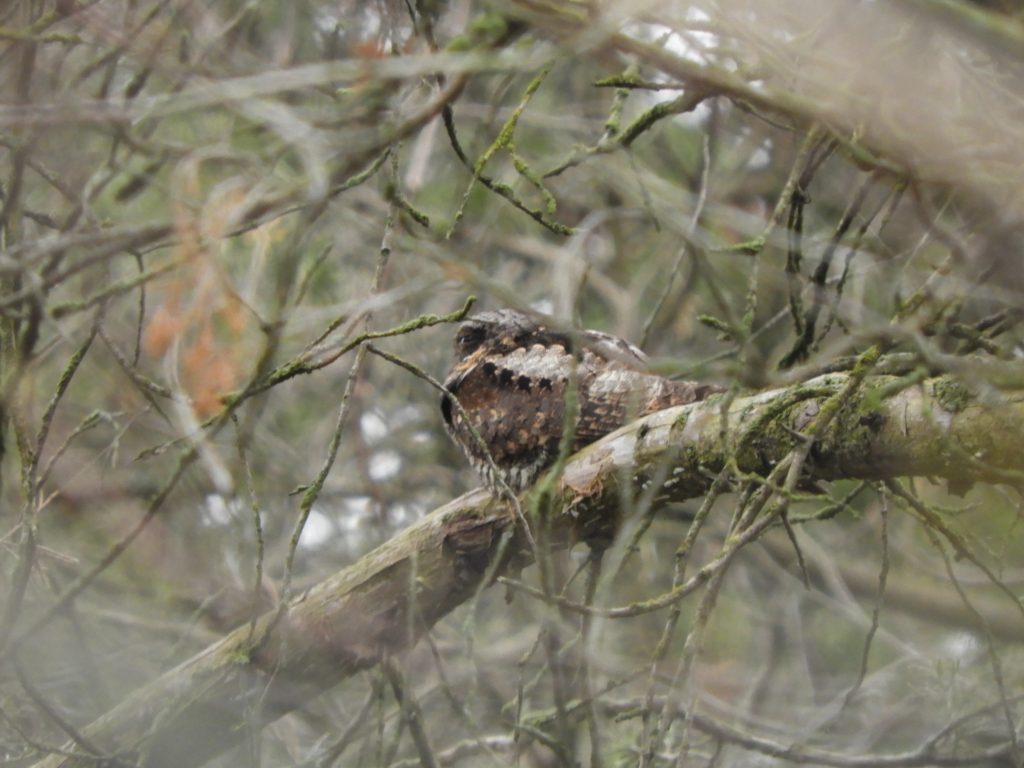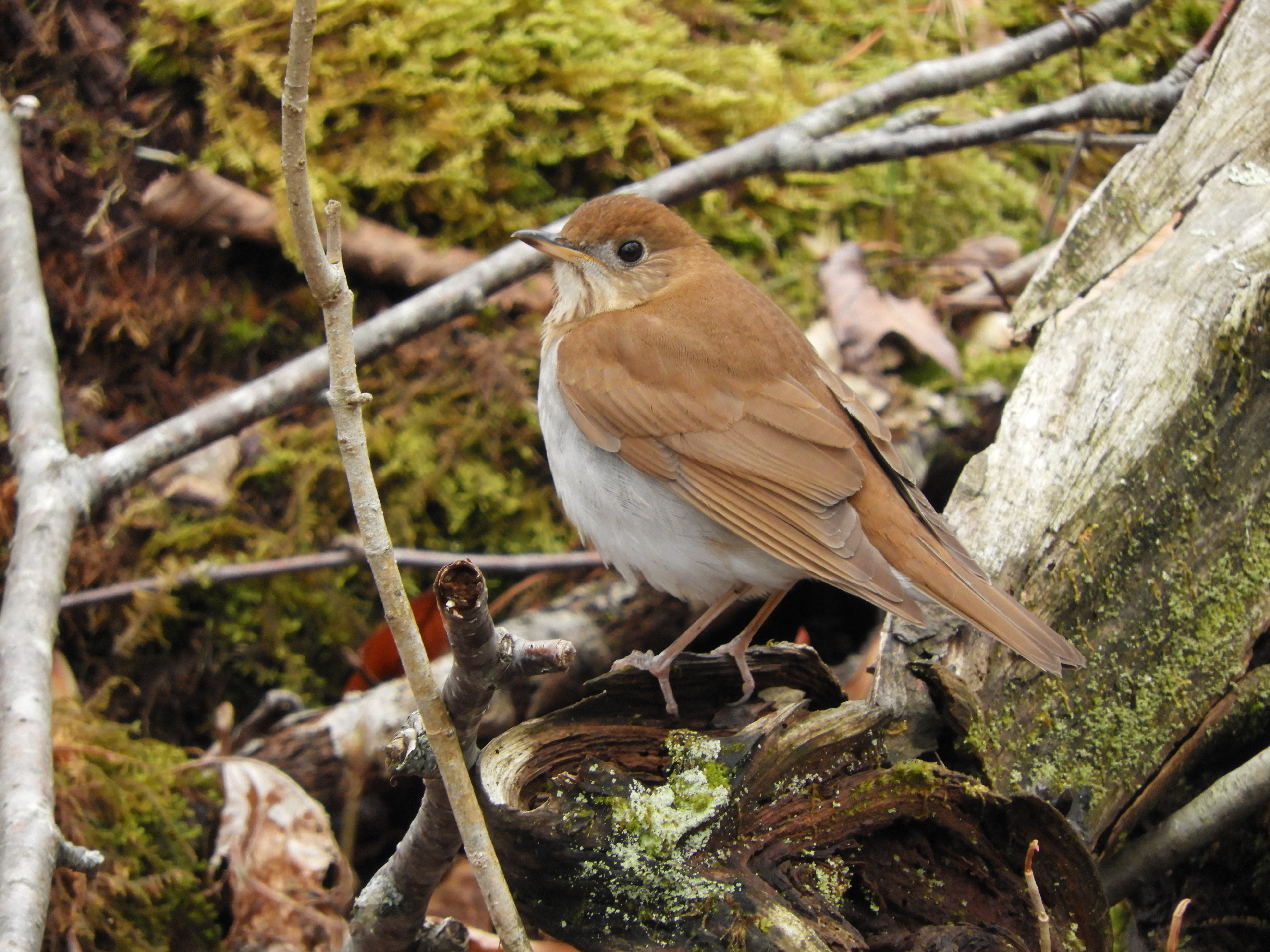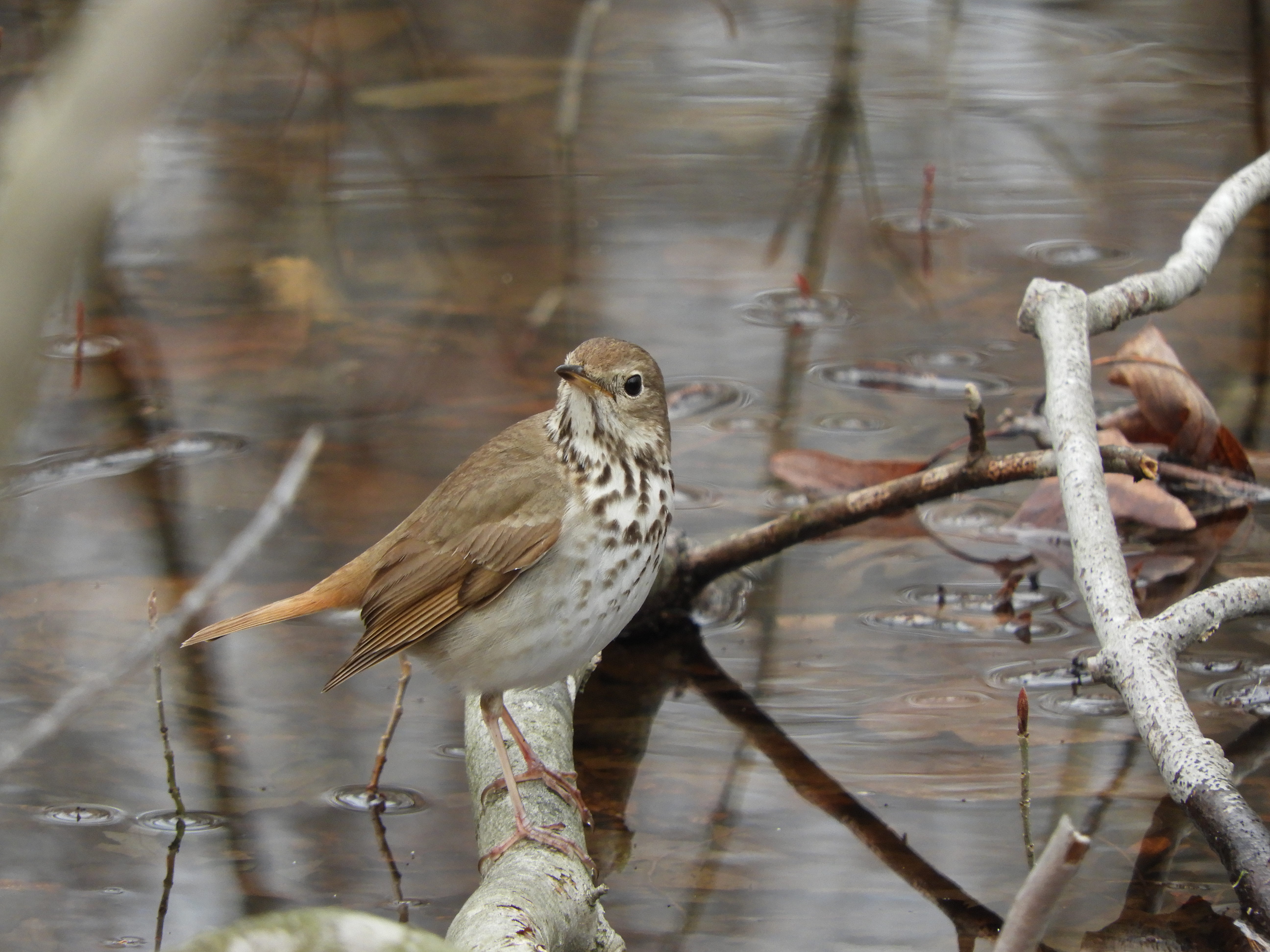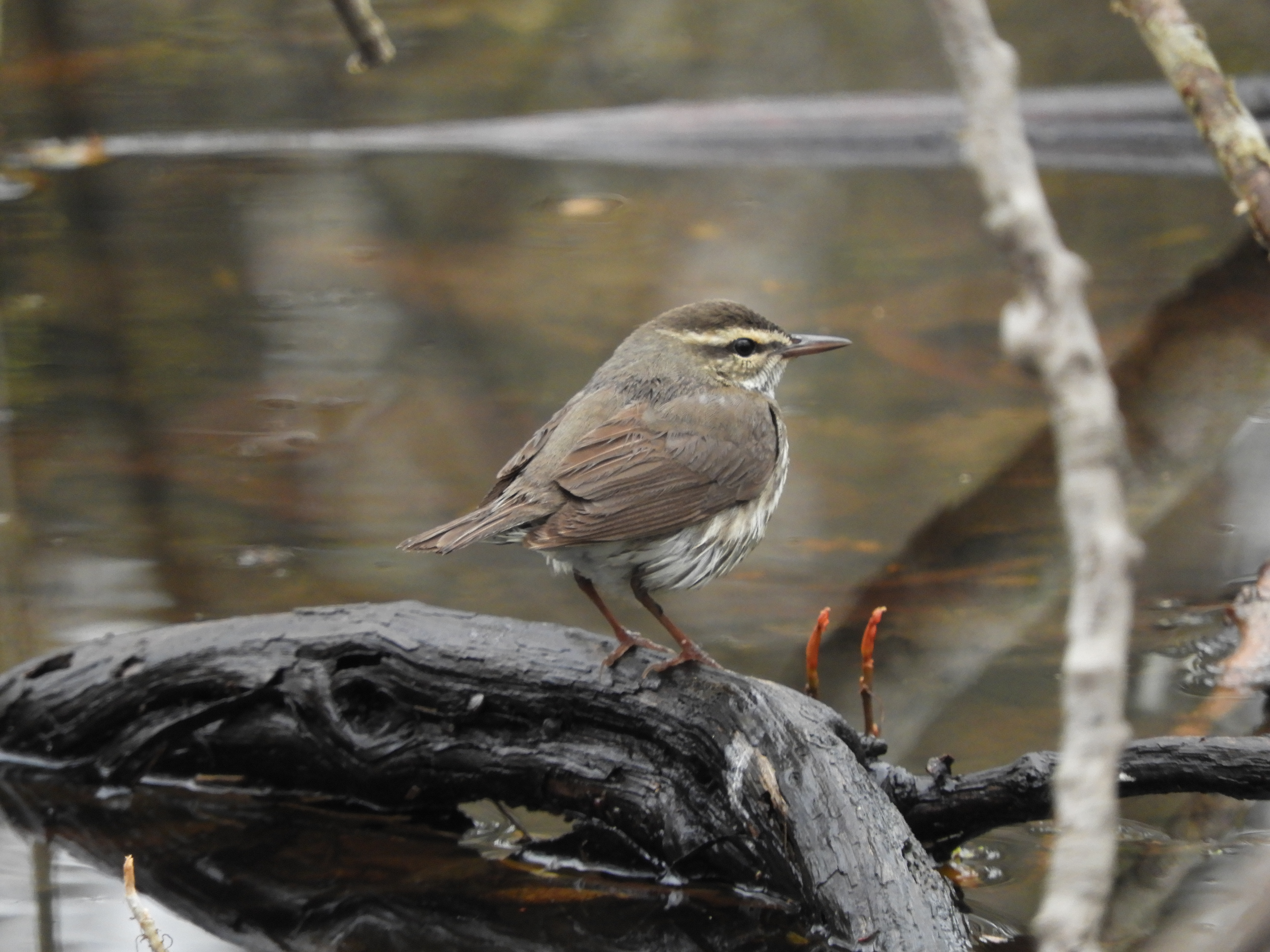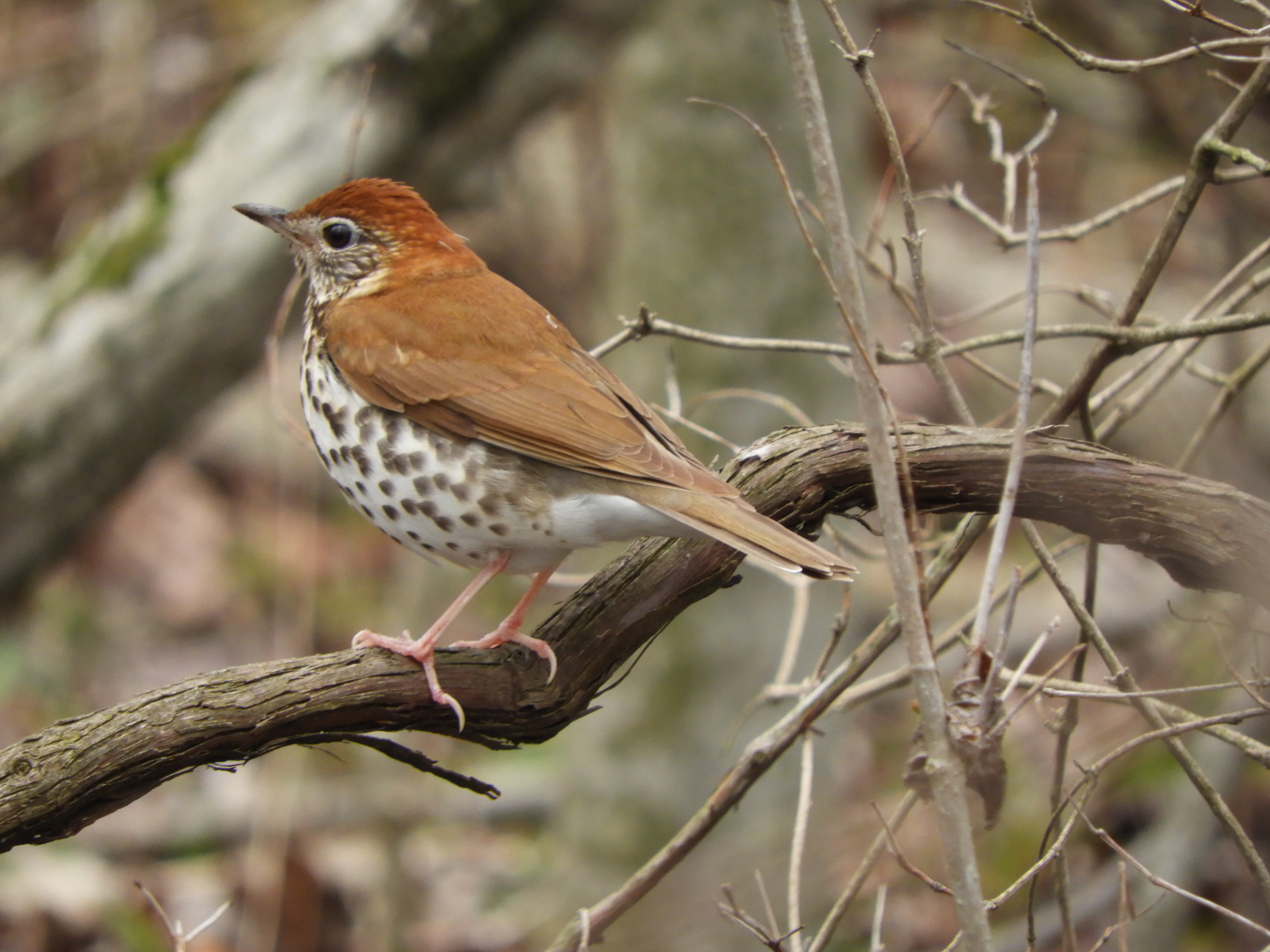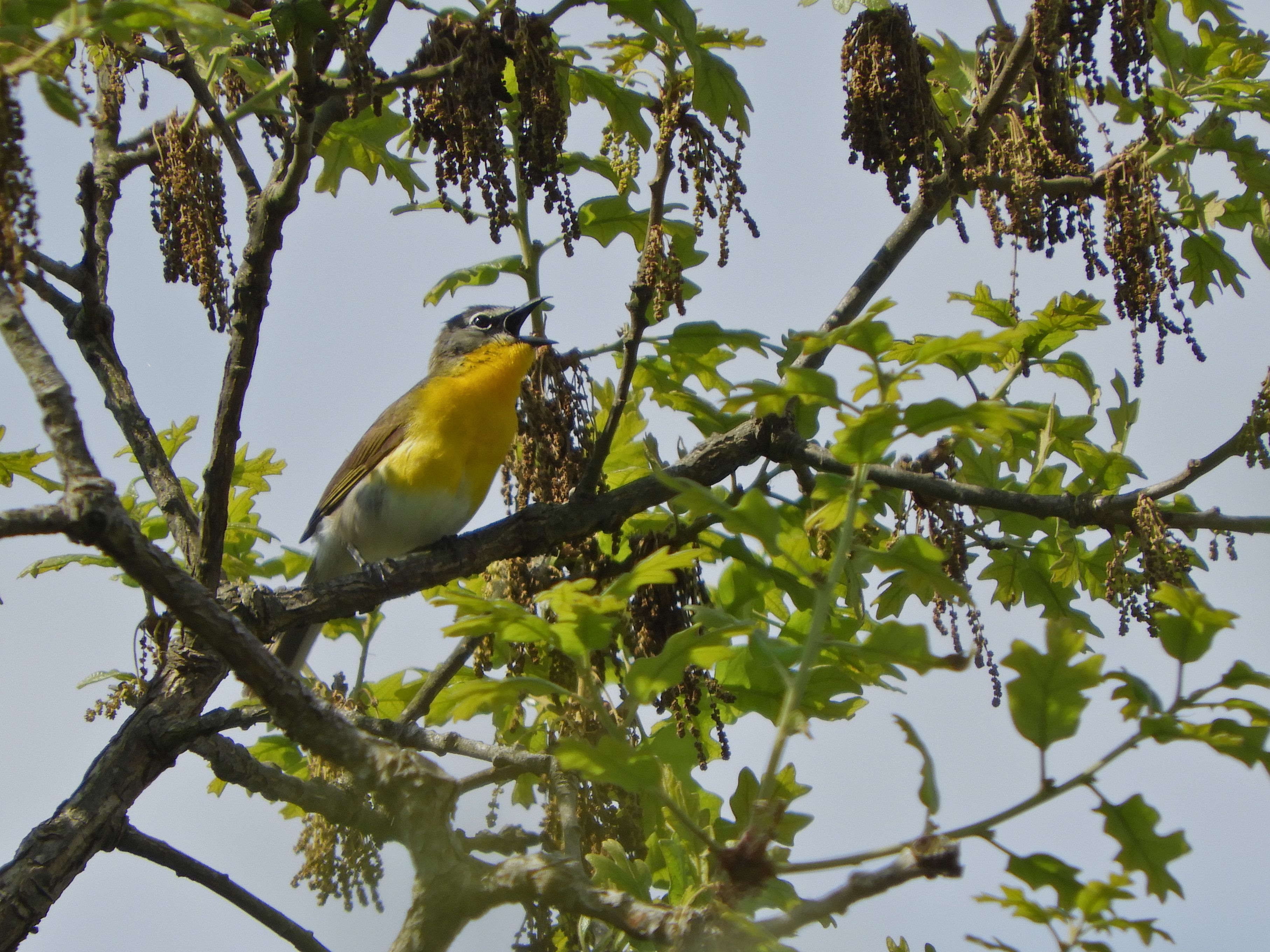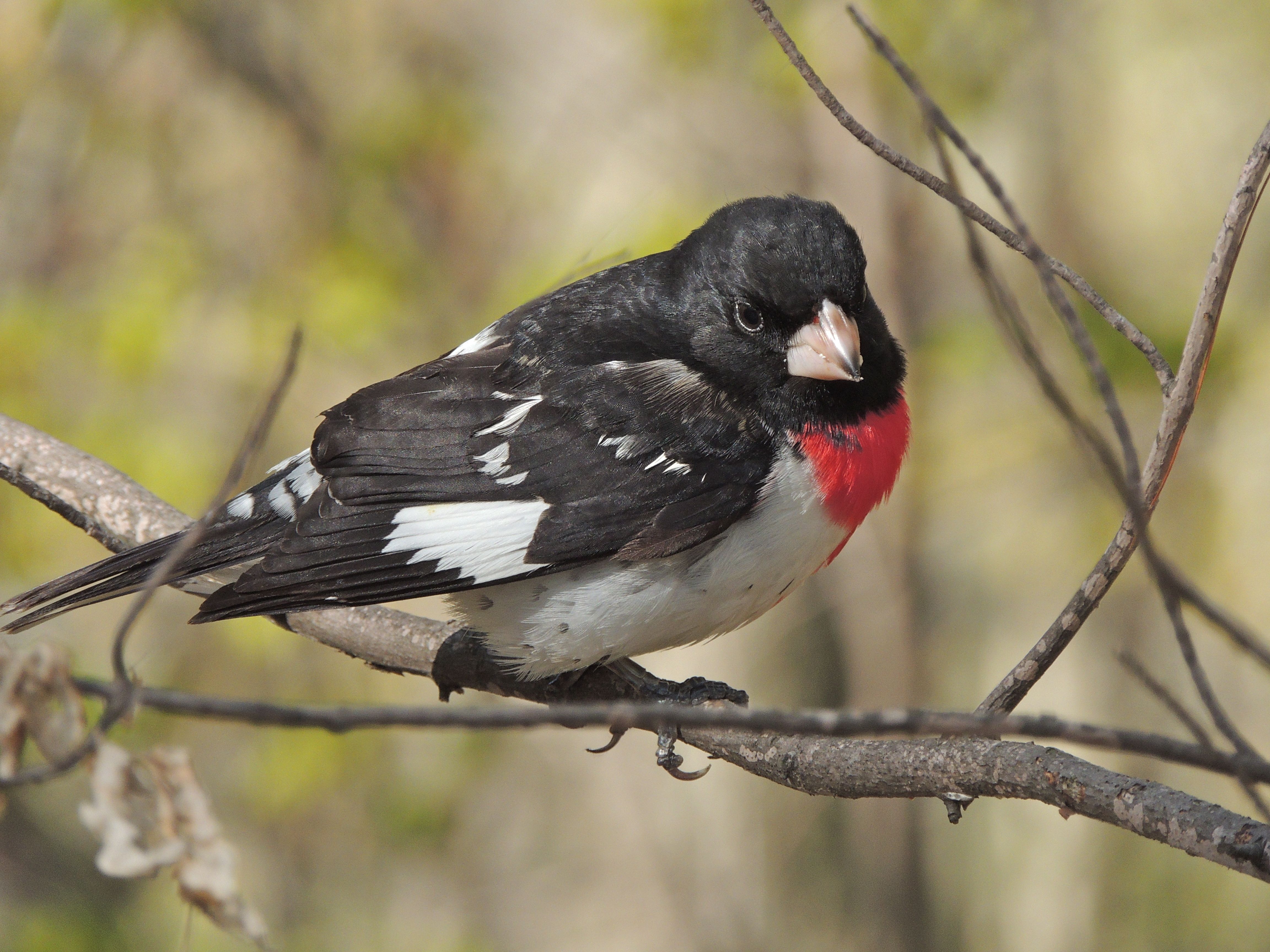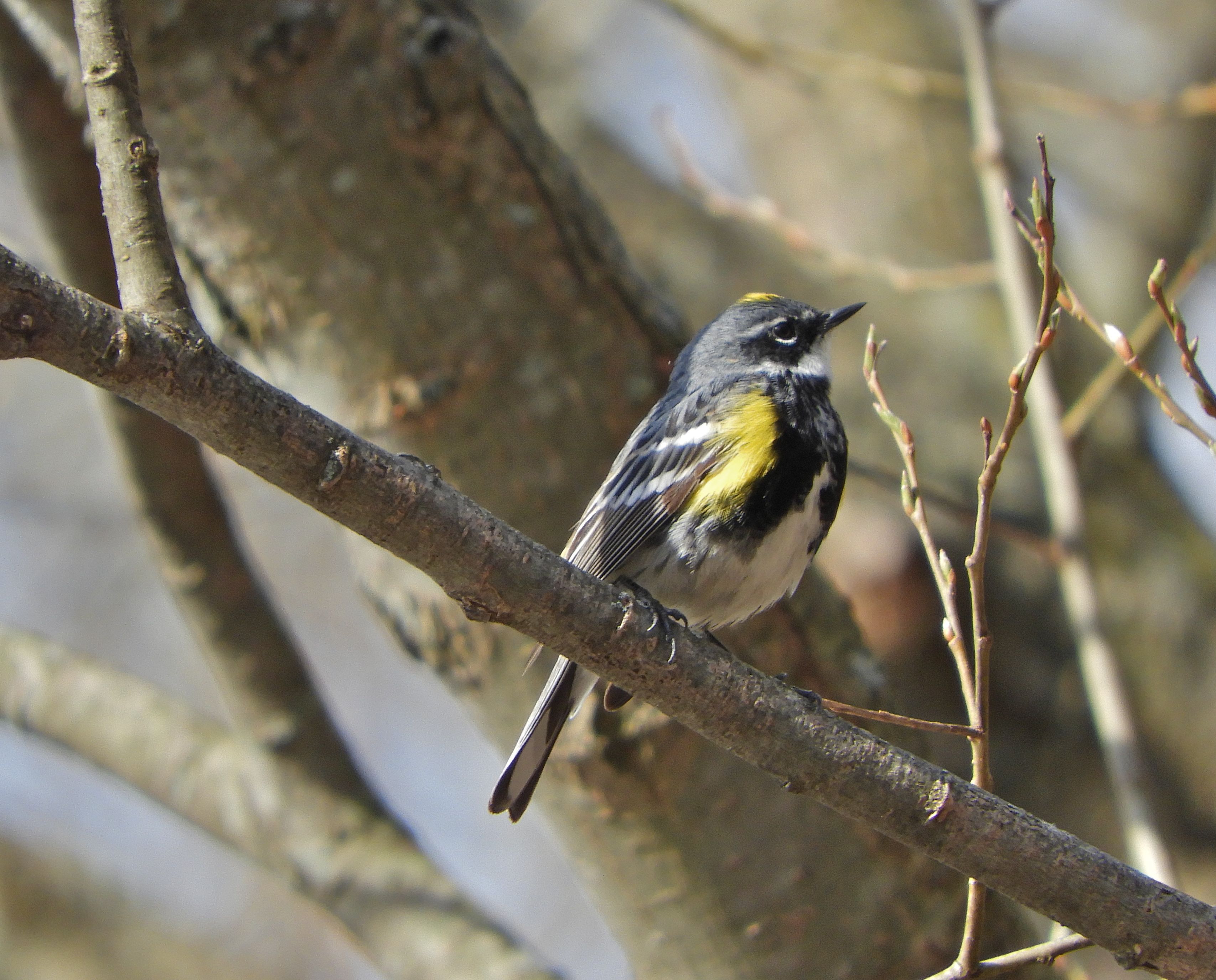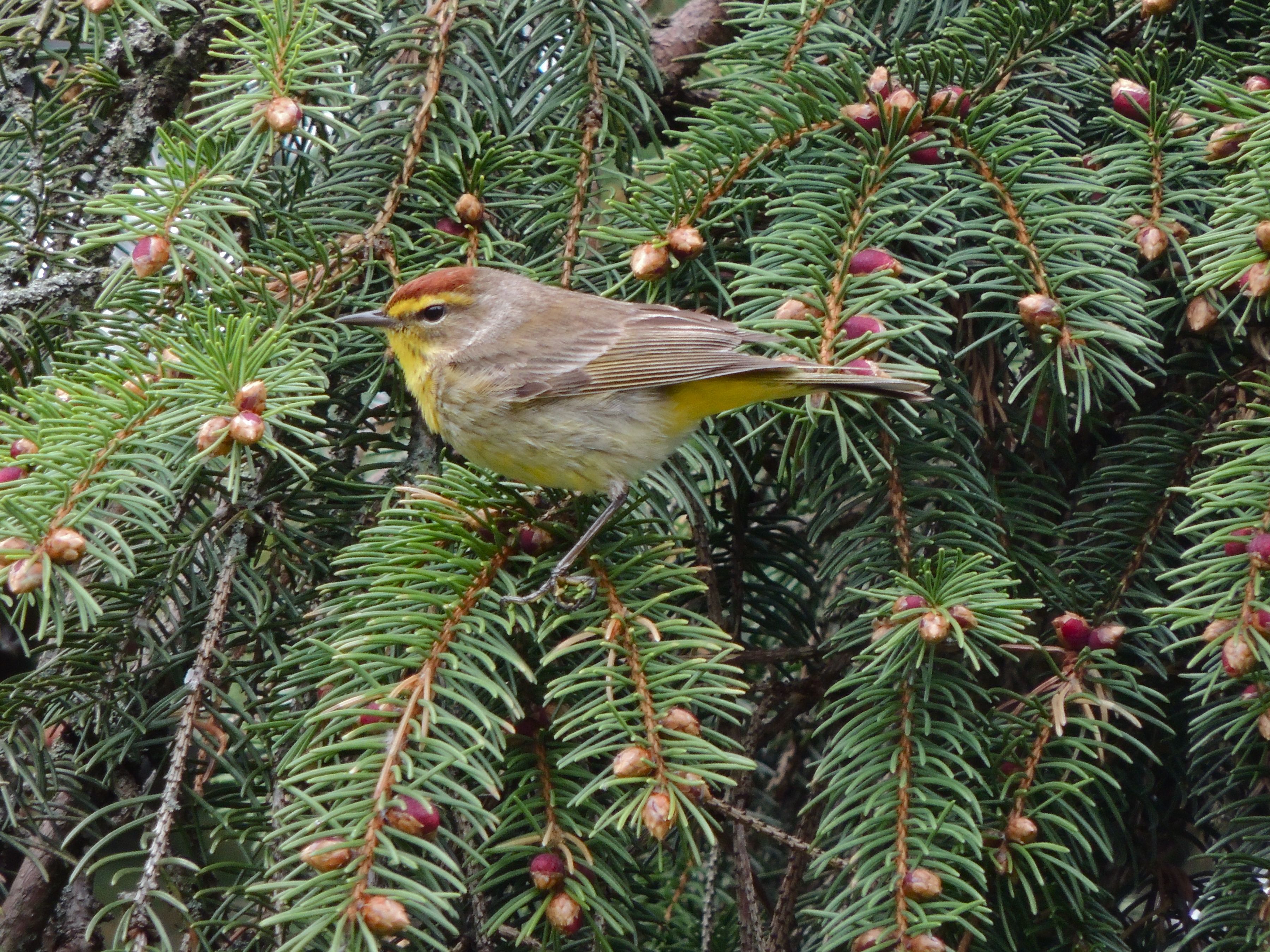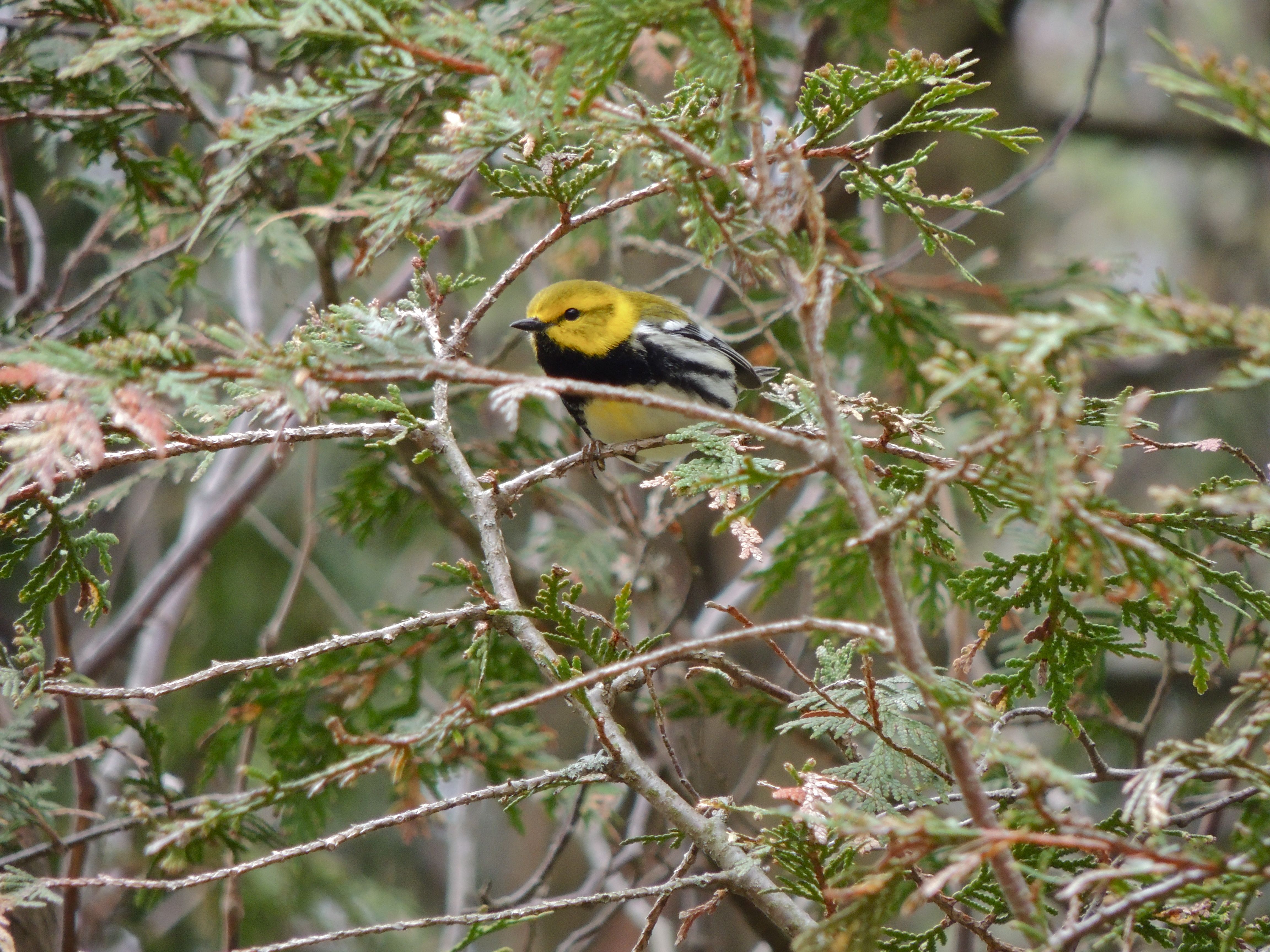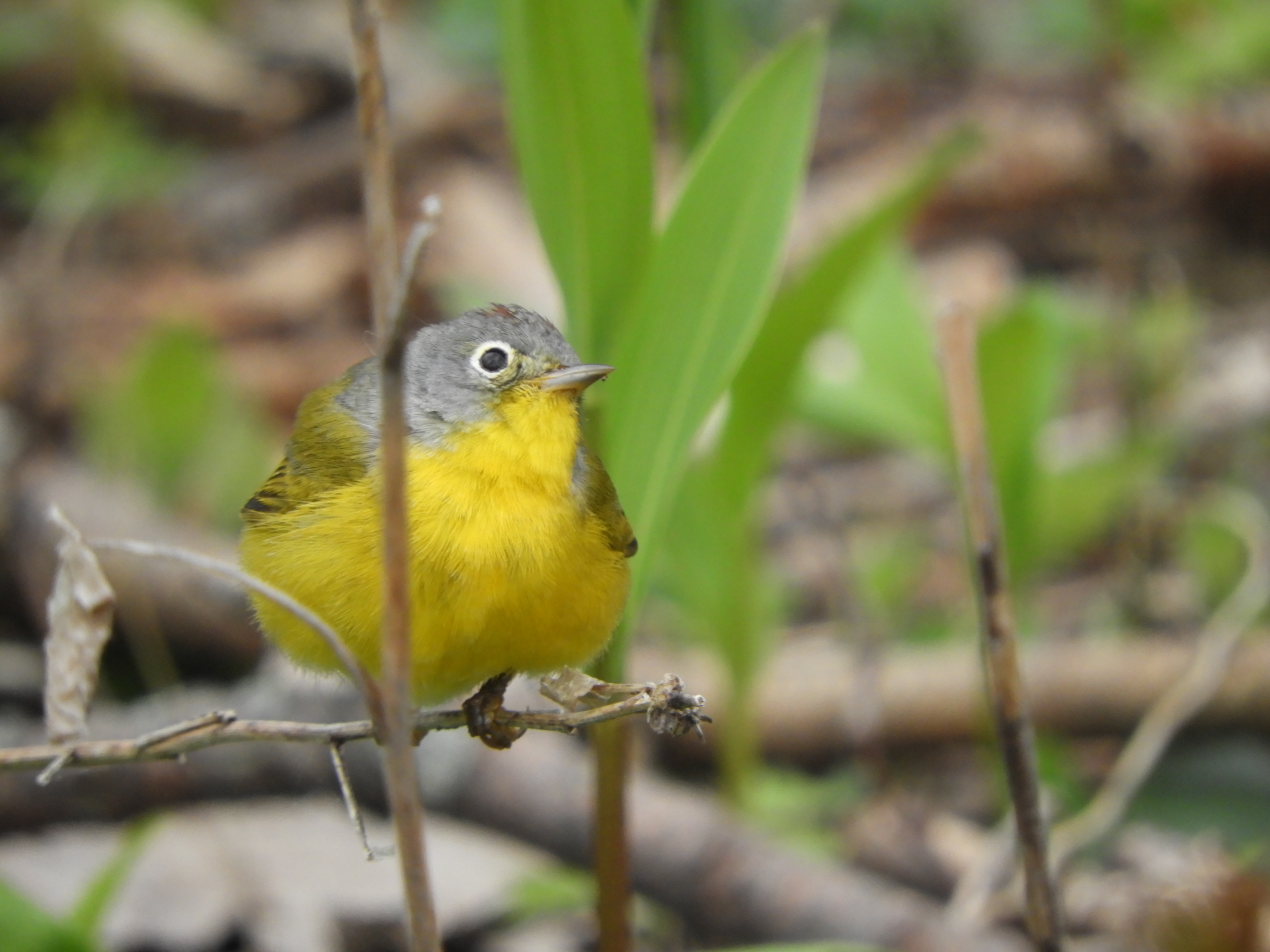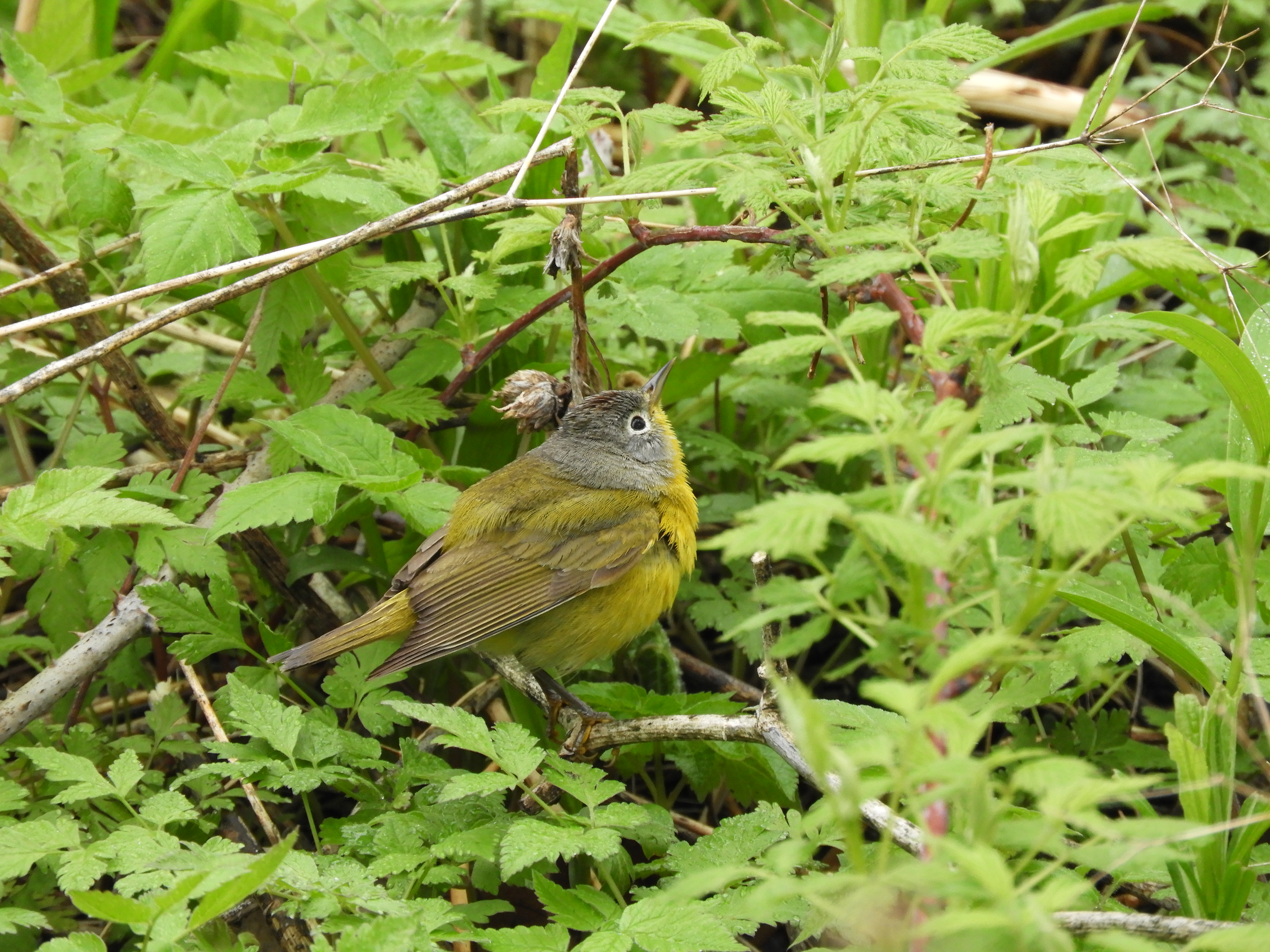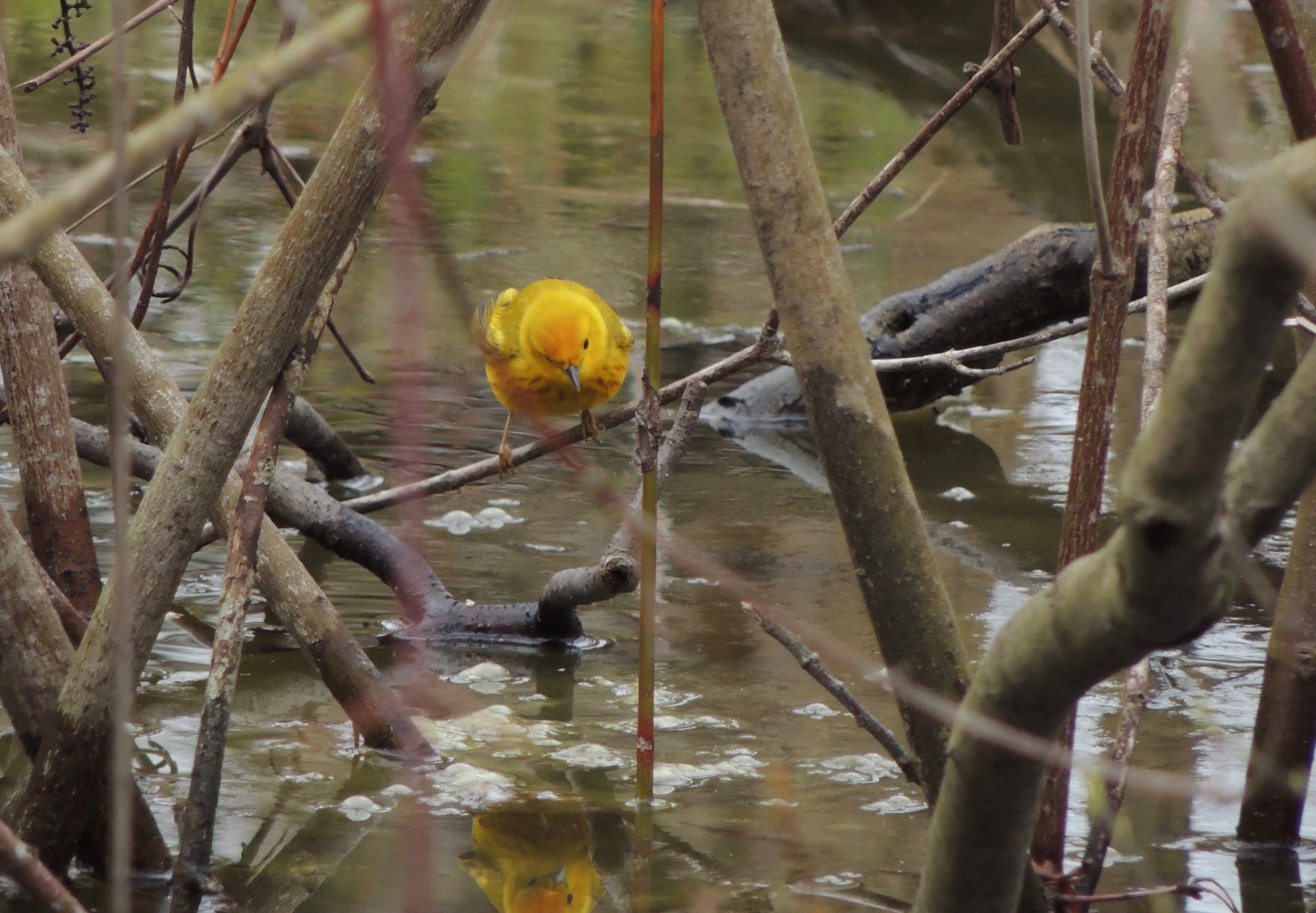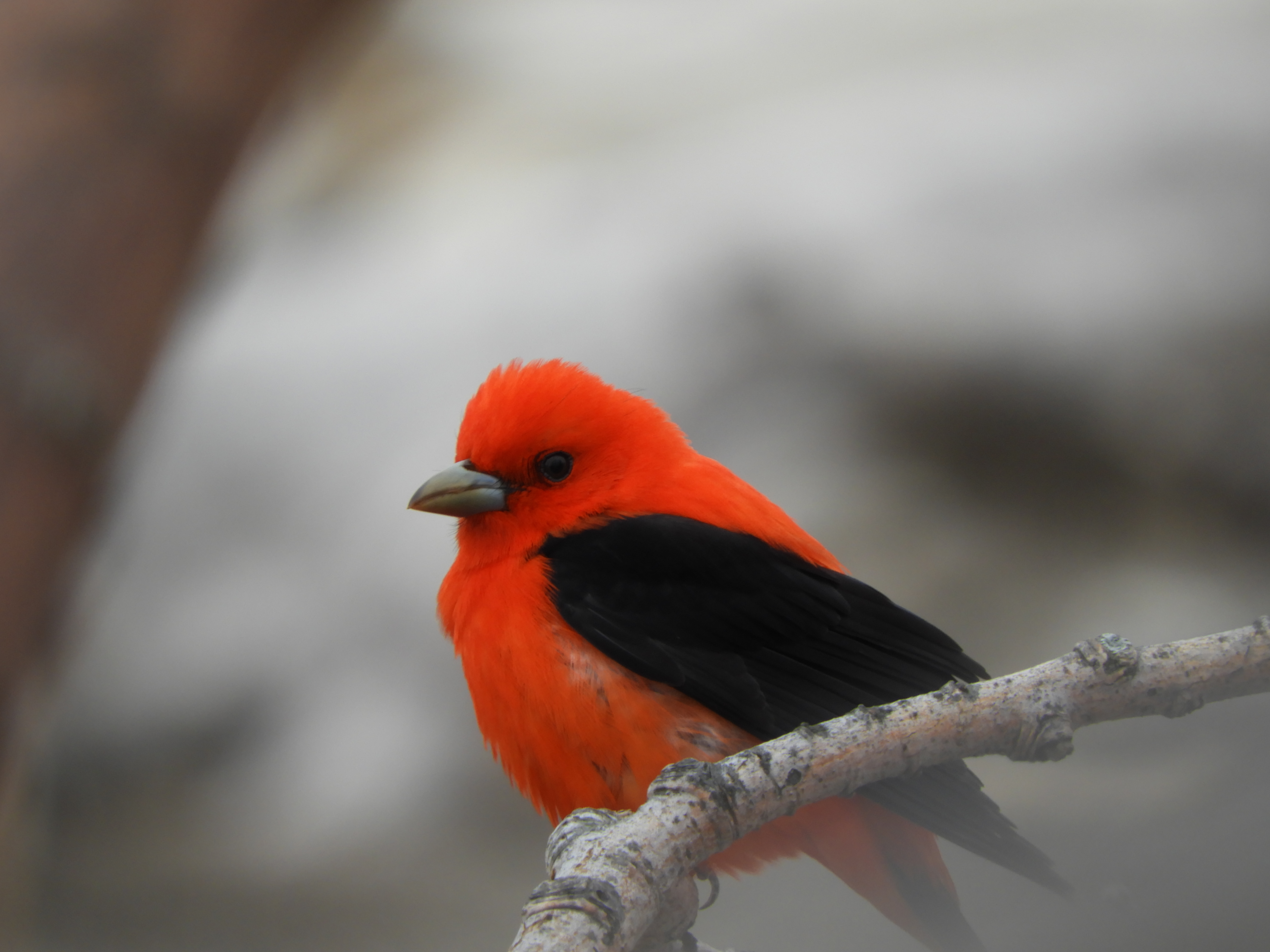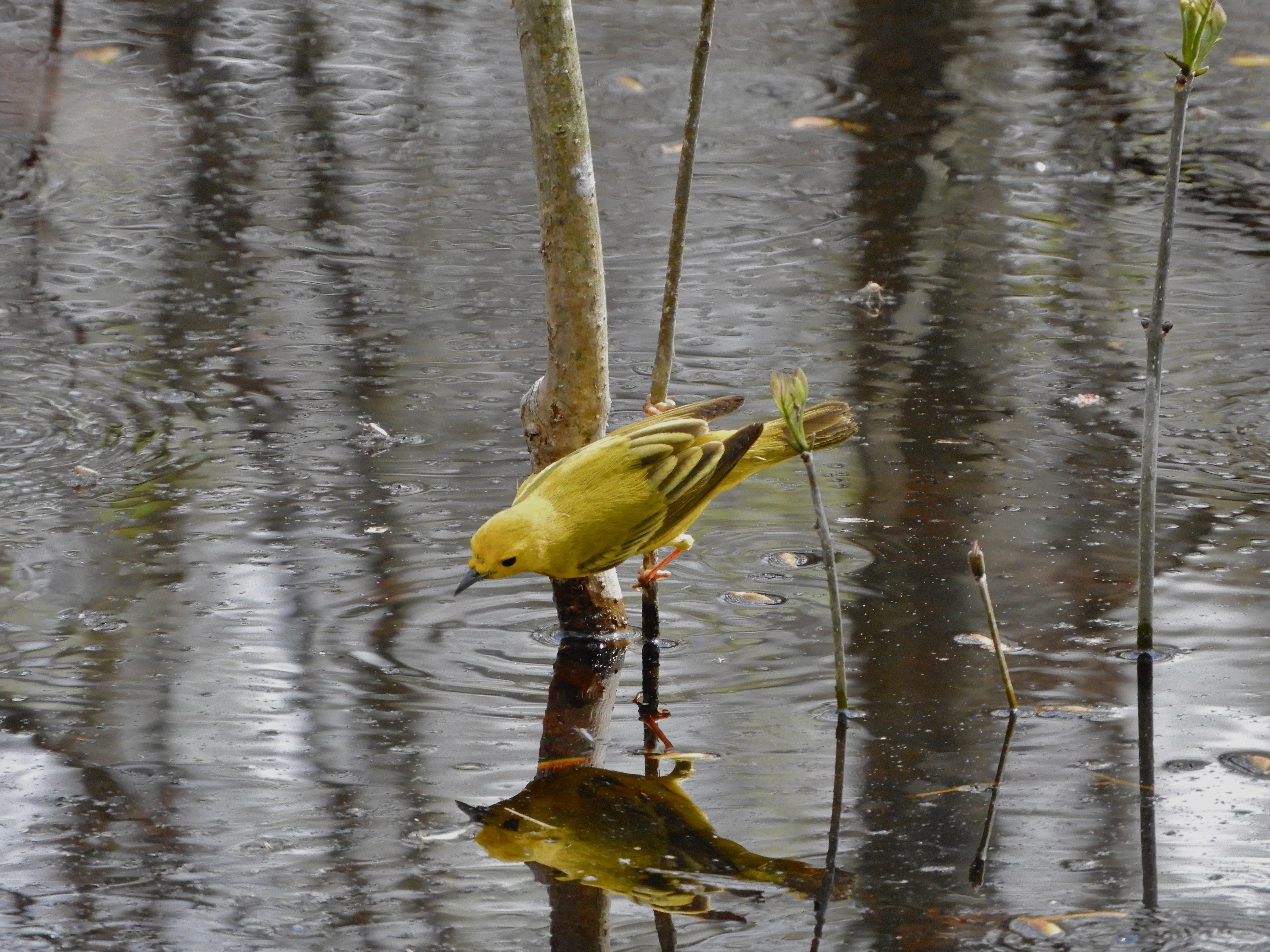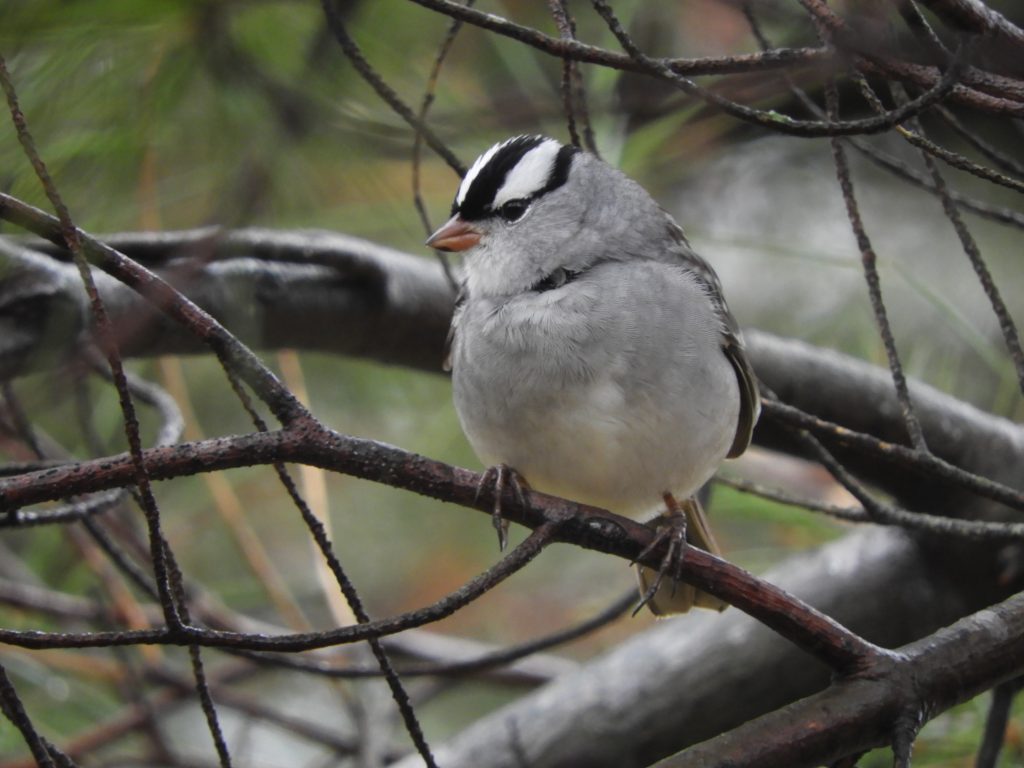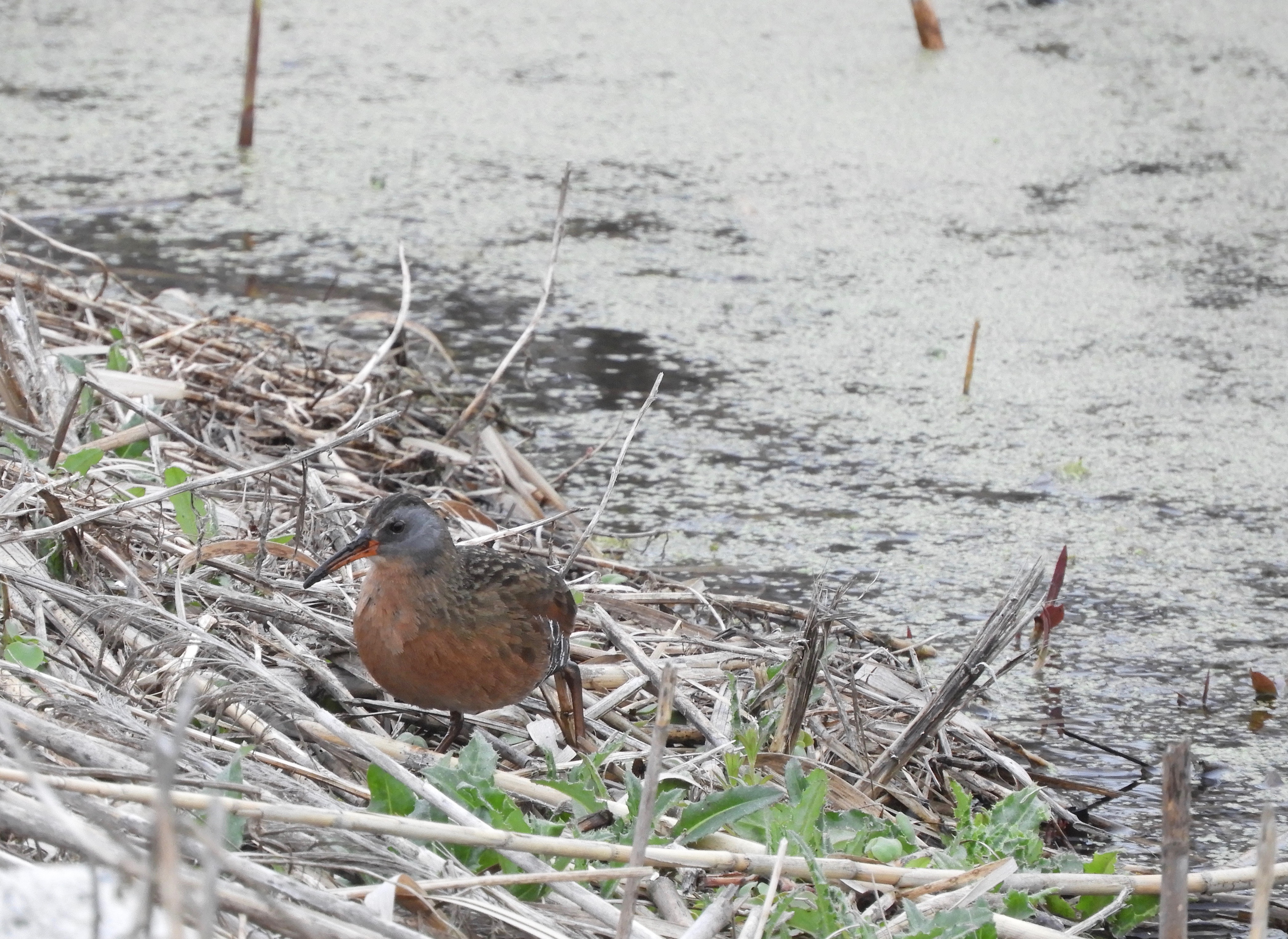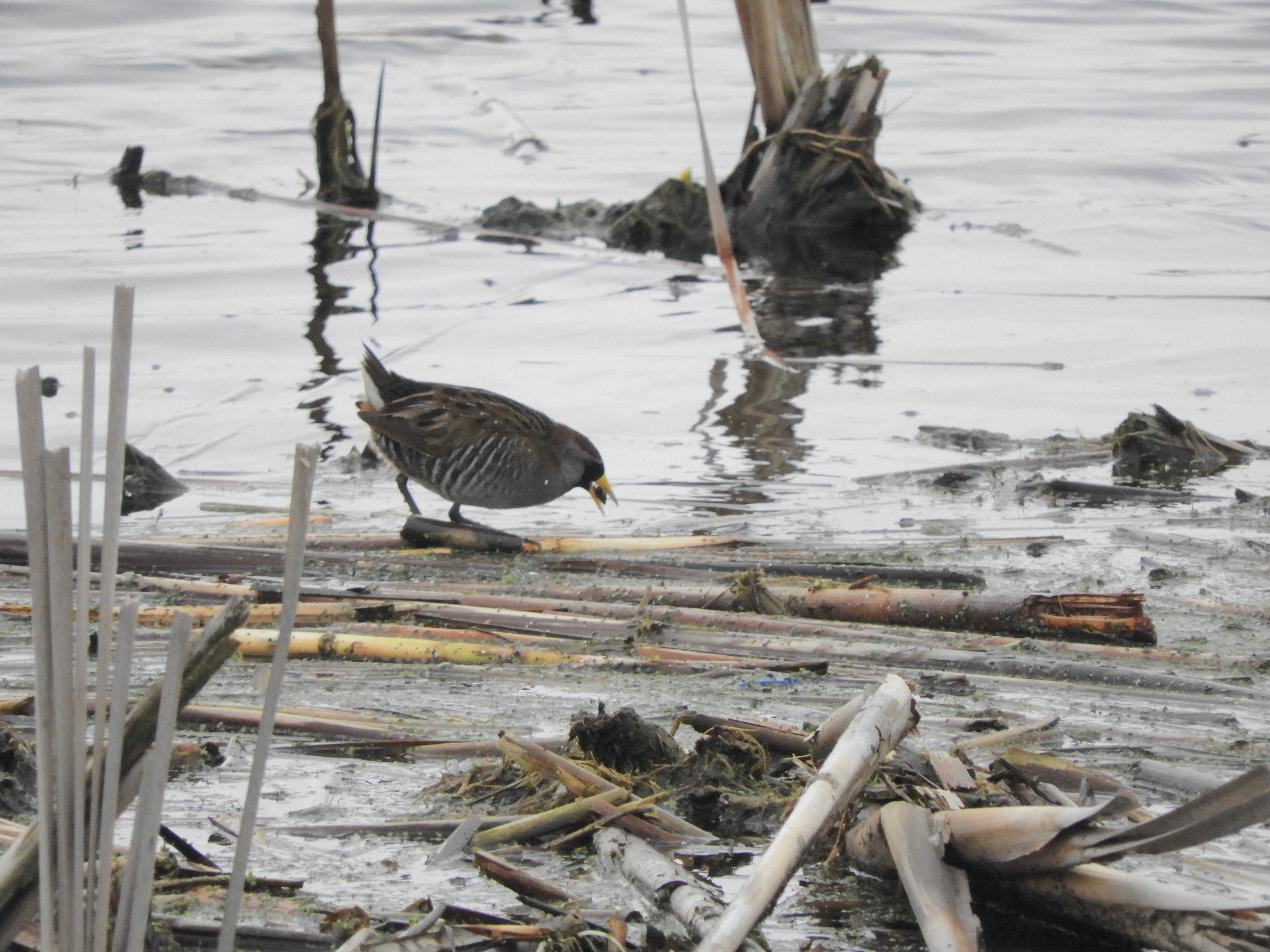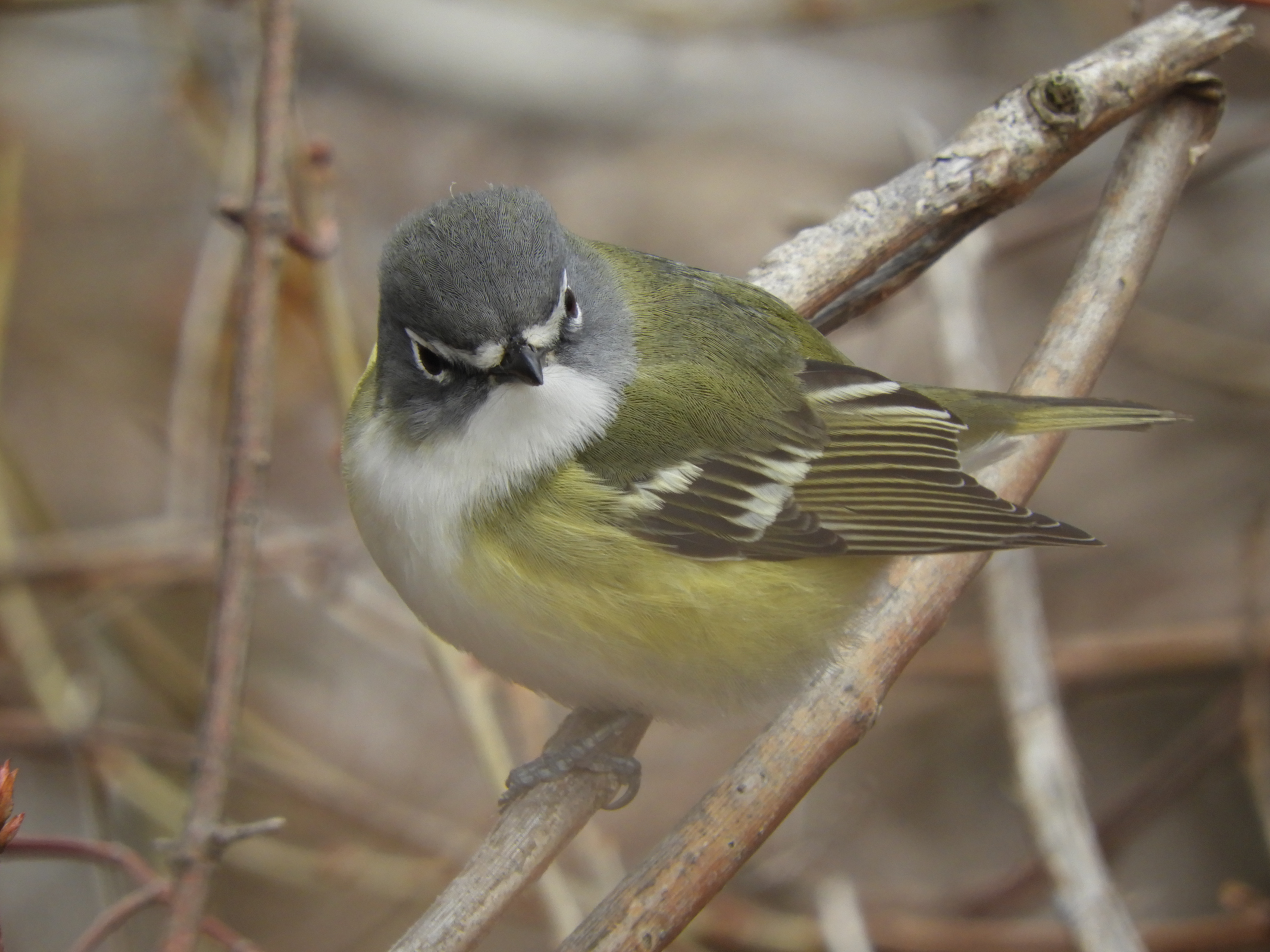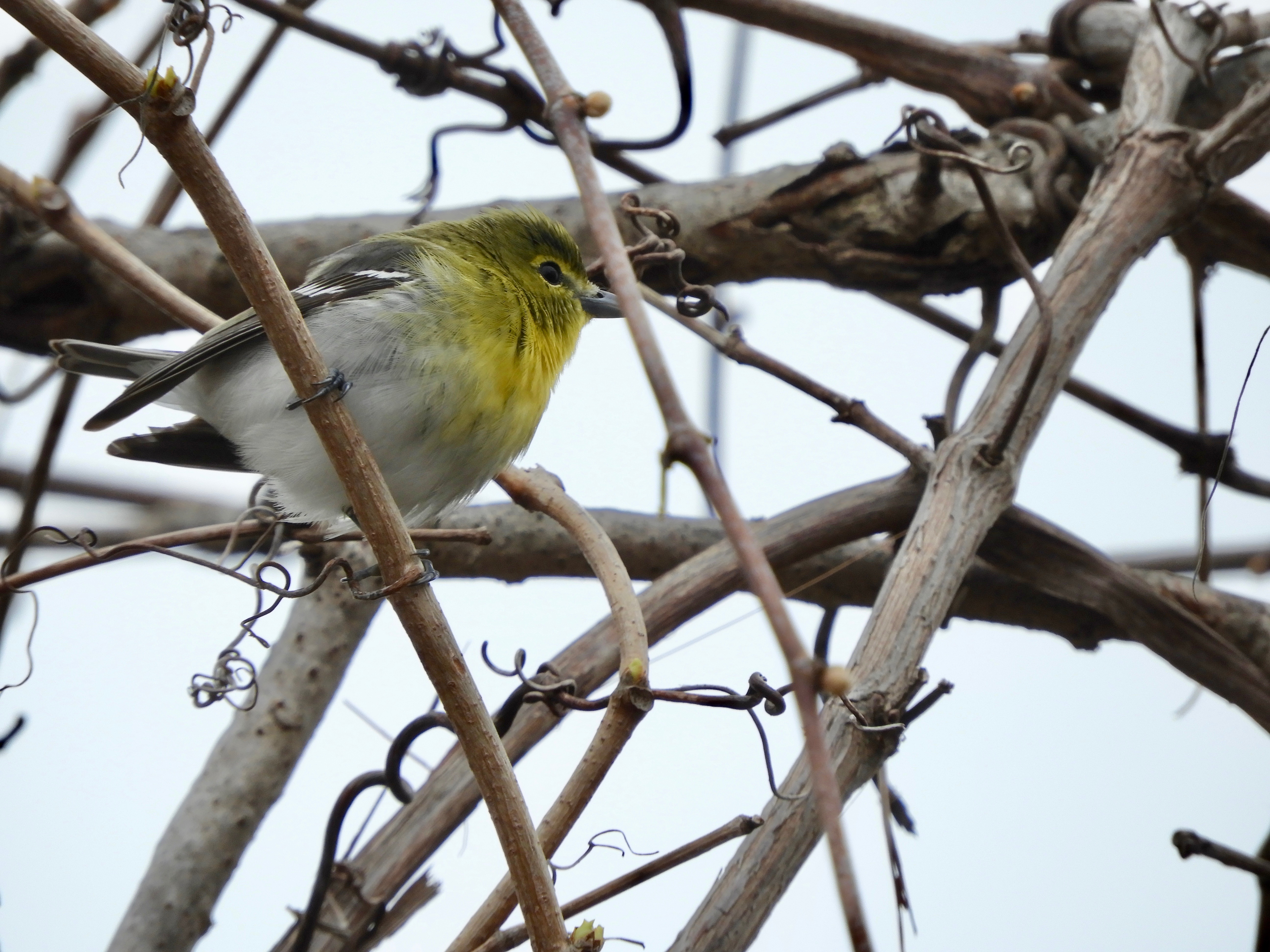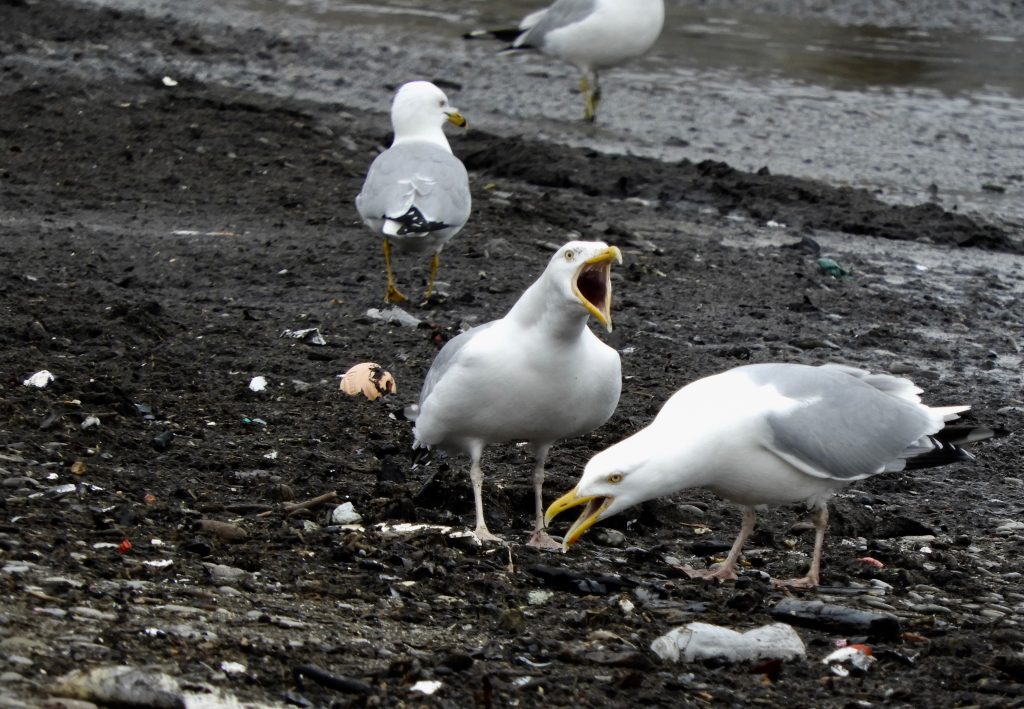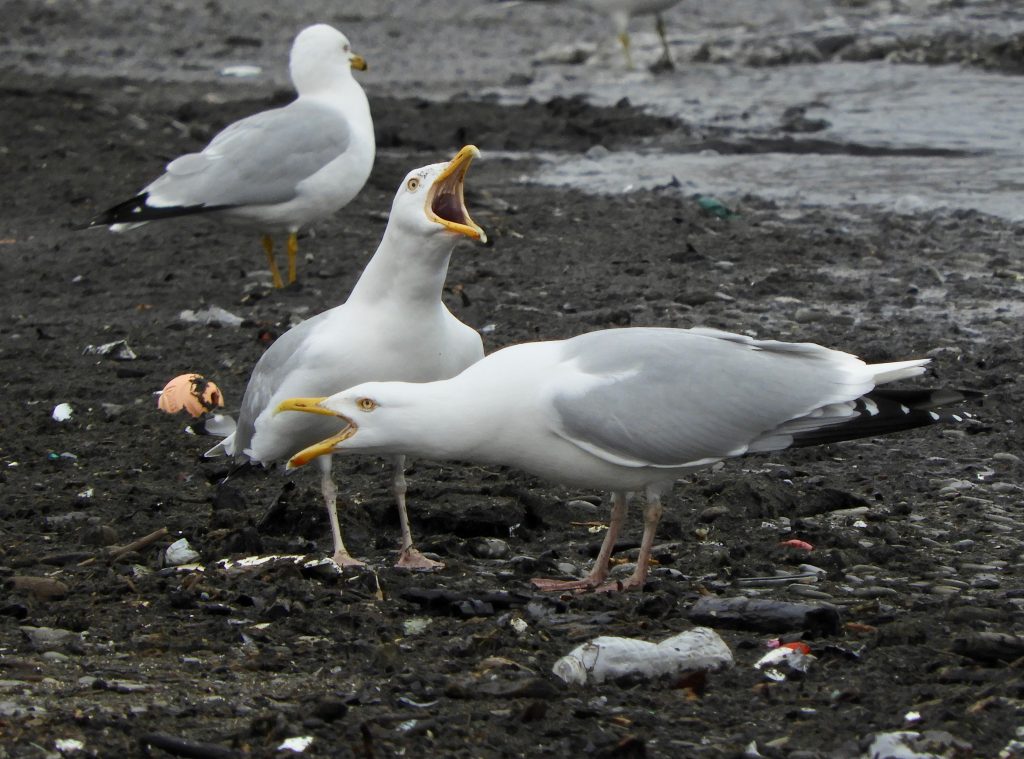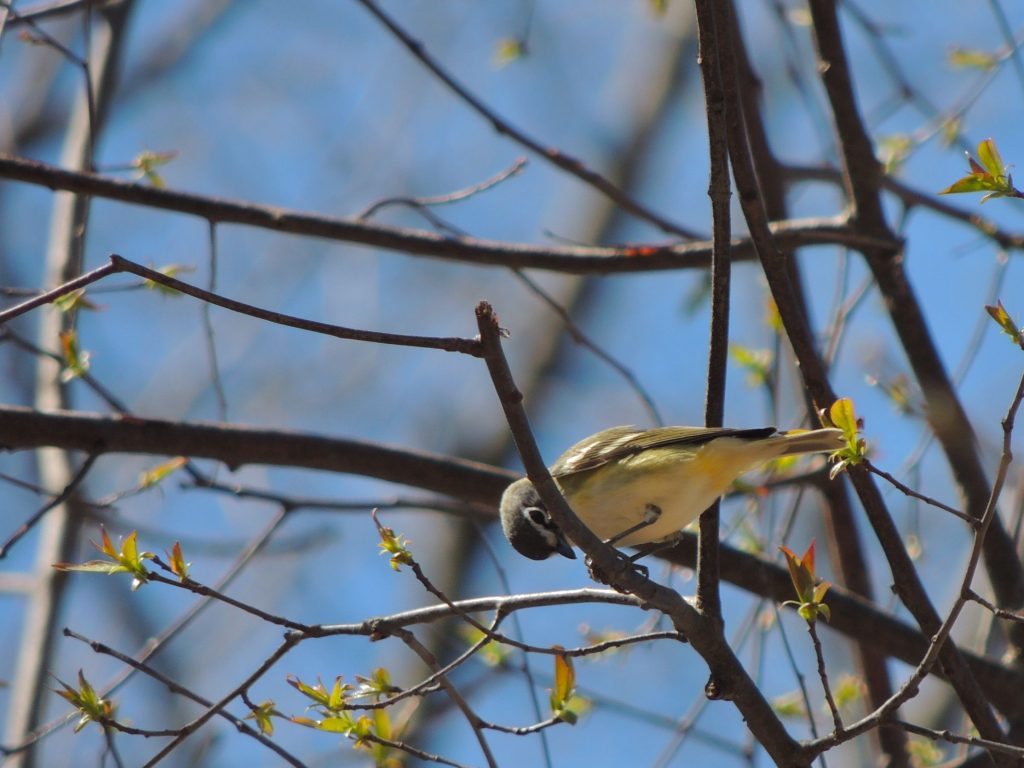May 4 2019. Point Pelee, ON. This is the second of a two-man, two-day flying visit to Ontario’s Rondeau Provincial Park and Point Pelee National Park. Pelee takes the honours as the hottest birding destination of the two, but to temper that, it is also most heavily visited. Unlike 24 hours earlier, the birds were relatively fewer, but still lots to see and many really exciting discoveries. For the sake of illustrating the richness I’ll note that my single page of sightings numbered 74 including: Wood Thrushes, Veerys, and Hermit Thrushes, Baltimore Orioles, Northern Waterthrushes, Least and Great-crested Flycatchers, Common Loons, Barn Swallows and on and on.
We subsequently debated Bird of the Day, Barry favoured a solitary Yellow-breasted Chat but my money is on a Whip-poor-will. Without wishing to sound spoiled, I’ve seen several Y-B Chats over the years, mostly in and around Cape May N.J where they are plentiful – and spectacular territorial songsters. But Whip-poor-wills are rarely seen, though often and repetitively heard in the forested areas they favour. I have seen a few at night along remote country roads where their eyes shine like cats’ eyes, once I stopped the car and approached a Whip-poor-will as it sat spellbound on the road in the headlights’ glare.
Today’s Whip-poor-will was a quite different encounter. We had stopped to look at a small group of Ruby-crowned Kinglets and an Orange-crowned Warbler, they were hanging around and oddly hyper-active beside a straggly Red Cedar. As we watched they seemed to attract more small birds and we wondered if an owl was nearby. It took a long time but eventually we were able to spot a Whip-poor-will sitting quietly, minding its own business on a horizontal branch at the back of the cedar. Their cryptic forest-floor plumage makes them easy to overlook but we were lucky enough to have the mobbing activity of the kinglets and Co. to lead us to it. Bird of the Day for me. Had we been dedicated enough we might have returned to the site at dusk to hear it start calling but we weren’t and we faced a three hour drive home on an empty stomach. Enough for one day (or two).
